If you have ever seen a Bonsai tree for sale in your local hardware store, chances are that it’s a juniper Bonsai tree. Prized and popular for its delicate foliage and ease of shaping, juniper Bonsai trees are perfect for both the beginner and the expert Bonsai tree owner. But what are some of the most common types of juniper trees to use in Bonsai tree cultivation and what should you know about their general care?
Whether you are just beginning your foray into Bonsai tree care or you want a juniper tree as your first bonsai tree specimen, here’s everything you need to know about keeping and caring for a juniper Bonsai tree in your home!
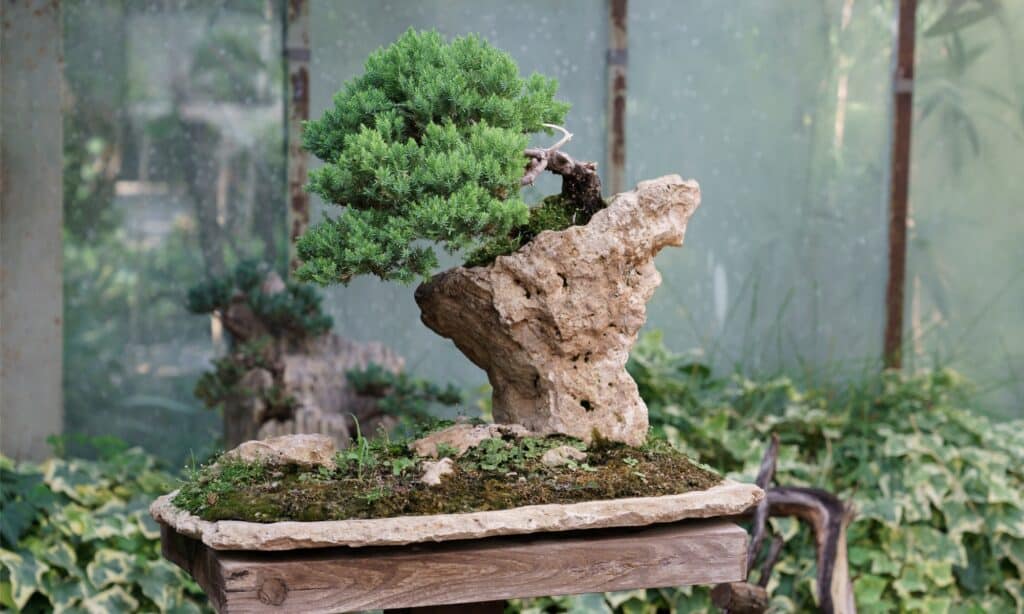
Prized and popular for its delicate foliage and ease of shaping, juniper Bonsai trees are perfect for both the beginner and the expert Bonsai tree owner.
©iStock.com/Dima Berlin
| Juniper Bonsai Tree Facts | |
|---|---|
| Botanical Name | Juniperus |
| Common Types | Common juniper, Japanese garden juniper, California juniper, Chinese juniper |
| Sunlight | Full and direct; at least 6 hours of outdoor sunlight |
| Soil | Basic pre-made Bonsai soil mixture or make your own using lava rocks, pumice, clay, and organic soil |
| Water | Well-draining; allow soil to dry out a little between waterings and avoid soggy soil at all times |
| For Beginners? | Certain species, yes! |
| Indoors or Outdoors? | Outdoors only |
| Pairs Well With… | Rocky environments and a cascading shape! May also grow well with other Bonsai tree types to create a forest. |
Common Types of Juniper Bonsai Trees
Most juniper trees grow in a similar fashion and have very similar care requirements. However, most Bonsai tree keepers choose their juniper tree type based on foliage. Juniper trees can be categorized based on their leaves or needles, leading to two different artistic or aesthetic choices. You can choose between juniper trees with scale-like foliage or needle-like foliage, depending on your preferences. However, the care between the two types of juniper trees doesn’t vary much.
Common Juniper
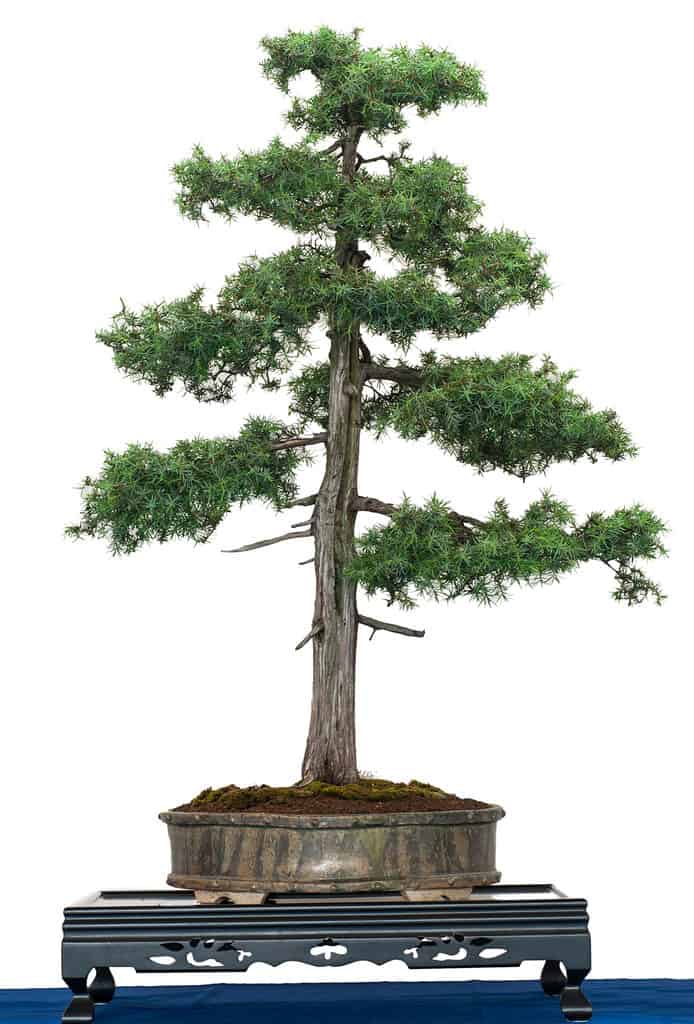
While beautiful when grown straight, common juniper trees can be curved in Bonsai cultivation too.
©Bernd Schmidt/Shutterstock.com
Grown around the world and with one of the largest distributions of any other woody plants, the common juniper is an ideal Bonsai specimen for cold climates. These shrubs are particularly hardy and produce attractive, needle-like foliage when grown in a bonsai tree format. They are classified as Juniperus communis and grow naturally in North America, Asia, and Europe, making them easy to propagate!
California Juniper

Native to the west coast, California juniper trees make great Bonsai tree specimens.
©Lilly Kauffman/Shutterstock.com
Classified as Juniperus californica, the California juniper is native to the west coast of North America, as its name implies. The native habitat of this shrub makes it particularly drought-tolerant, which may make this Bonsai tree specimen ideal for desert regions and other hot climates. Otherwise, this shrub is slow to grow and takes pruning well, making it a great choice for the beginning Bonsai tree artist.
Chinese Juniper

Chinese juniper trees produce scale-like foliage and are great specimens for creating deadwood.
©Serg Zastavkin/Shutterstock.com
Native to Asia, there are a number of different Chinese juniper cultivars to consider growing as Bonsai trees. Scientifically classified as Juniperus chinensis, Chinese juniper trees produce scale-like foliage and are great specimens for creating deadwood. Plus, their branches and trunks twist naturally, making them ideal for cascade stylings as well as wiring.
Sierra Juniper
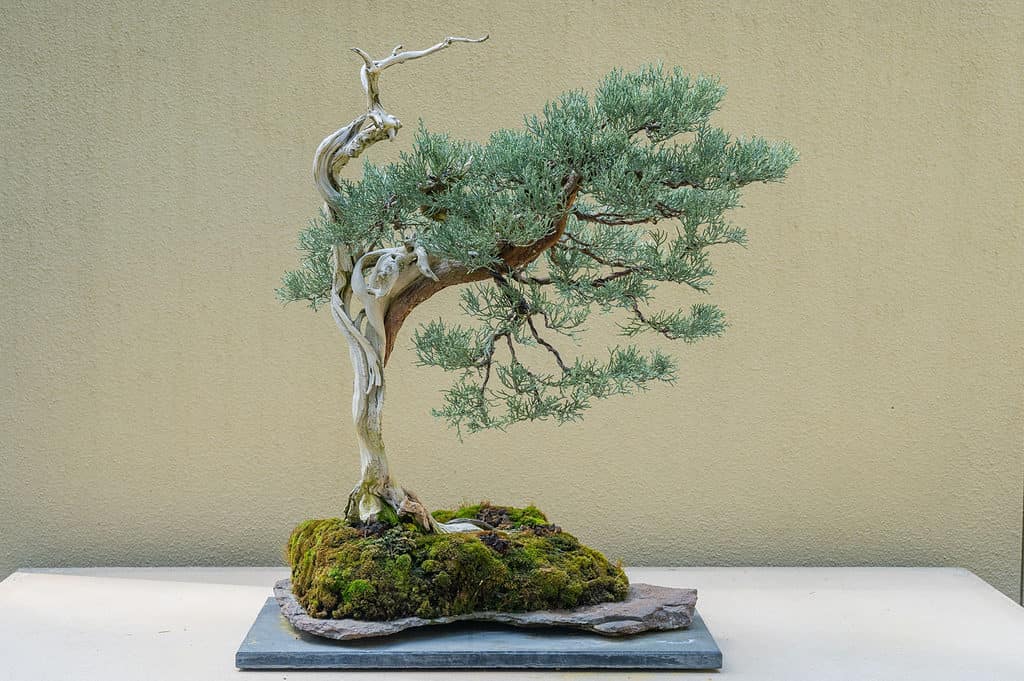
Also known as the western juniper, Sierra juniper Bonsai trees look good next to rocks.
©Mariusz S. Jurgielewicz/Shutterstock.com
Also native to the west coast of North America, Sierra junipers are also known as western junipers for this reason. Classified as Juniperus occidentalis, western juniper Bonsai trees begin with needle-like foliage that becomes more scale-like with age. Speaking of age, this juniper species takes its time to grow, so don’t expect a fast Bonsai tree specimen with this one!
Japanese Garden Juniper

Also known as green mound junipers, these particular juniper tree species are perfect for Bonsai tree cultivation and beginning bonsai tree artists.
©RealityImages/Shutterstock.com
If you’ve ever seen a juniper Bonsai tree for sale in a hardware store or nursery center, chances are high that it is a Japanese garden juniper tree. Also known as green mound junipers, these particular juniper tree species are perfect for Bonsai tree cultivation and beginning Bonsai tree artists. They are easy to care for and very forgiving, even if you happen to prune them too much!
Caring for Your Juniper Bonsai Tree
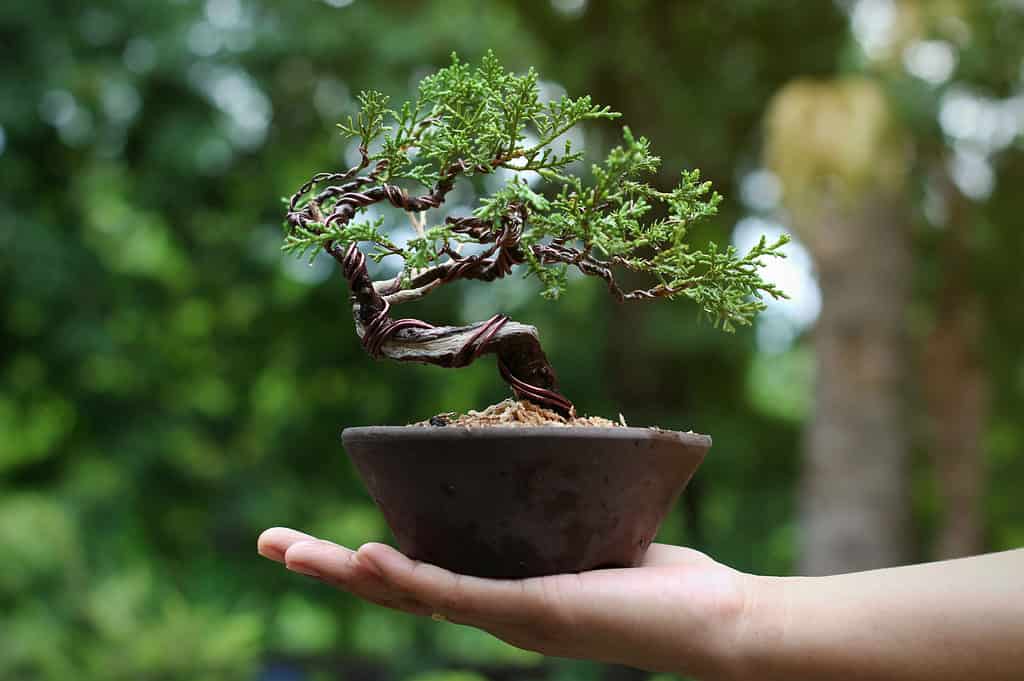
Did you know that juniper trees will perish inside, preferring cold temperatures and changing seasons?
©qSPOoKYp/Shutterstock.com
While juniper trees are some of the most popular tree specimens for Bonsai tree cultivation, this doesn’t mean that they are simple to care for. However, with practice and proper research, you can care for your juniper Bonsai tree with ease. It’s important to note that this is a Bonsai tree species that must be kept outdoors. Juniper trees will perish inside, preferring cold temperatures and changing seasons.
With all this in mind, here are some of the basic needs that must be met for every juniper Bonsai tree to thrive.
Sunlight
Your juniper Bonsai tree will prefer full and direct sunlight for the majority of the day. You need to ensure that you place your tree in a location that receives at least six hours of uninterrupted sunlight, depending on the time of year. A juniper tree that doesn’t get enough sunlight will weaken and produce elongated foliage as well as brittle branches.
Soil Type
Choosing a pre-mixed Bonsai soil type is a great place to begin for any juniper tree that is being grown in miniature. Thankfully, juniper trees are amongst some of the most forgiving Bonsai tree specimens, so you may not need to mix your own soil for this particular tree. However, many Bonsai tree experts prefer to create their own soil blend out of lava rocks, clay, pumice, and organic soil.
Water
While juniper trees are fairly forgiving in terms of their care, Bonsai tree watering always needs to be precise. The amount of water that can be stored in such a shallow pot is not enough to maintain a Bonsai tree’s care, even a juniper tree. However, juniper trees prefer to dry out a little in between waterings. This might be difficult to accomplish, especially if you need to water your juniper tree everyday. Keep an eye on the soil wetness as you care for your tree and make sure to never over-water!
Placement
As previously mentioned, it’s important to only place your juniper Bonsai tree outdoors, in as much sunlight as physically possible. You cannot keep a juniper Bonsai tree indoors, despite there being many other indoor Bonsai tree species. This is one of the few Bonsai trees specimens that can thrive in colder temperatures, though it may need some protection If you experience outdoor temperatures under 10 degrees Fahrenheit regularly.
Pruning Your Juniper Bonsai Tree

Semi-cascade and cascading styles are perfect for juniper trees given the way they grow naturally in the wild.
©qSPOoKYp/Shutterstock.com
While many people may think that a juniper bonsai tree can be trimmed or pruned like a traditional juniper shrub, this is far from the case. In fact, juniper Bonsai trees can turn brown or weaken if they are pruned incorrectly. You should always leave some foliage alone on the branches that you want to keep alive, as juniper trees cannot create fresh foliage from completely pruned branches.
With all this in mind, juniper trees are amongst the most stable and strong trees for pruning, making them ideal for the overeager, beginning Bonsai tree keeper. It’s easy for these trees to bounce back and their deadwood remains beautiful and artistic if you happen to trim them too much! Given their overall flexibility, they are a great tree species for a number of different Bonsai tree styles.
Ideal Juniper Bonsai Tree Styles
You can grow your Bonsai tree into just about any style or shape if it’s a juniper tree. However, keep in mind that juniper trees can look a bit silly if they’re fully image isn’t designed properly, so you may want to avoid a broom style. Semi-cascade and cascading styles are perfect for juniper trees given the way they grow naturally in the wild. You may also consider the Bunjingi style which highlights the way a juniper tree might reach for light in a wild environment.
Propagating Your Juniper Bonsai Tree

If you don’t want to grow a juniper Bonsai tree from seed or propagated cuttings, juniper trees are readily available in most hardware stores depending on your location.
©Thanun Patiparnthada/Shutterstock.com
Given the fact that juniper tree species are among some of the most common plant species around the world, it’s easy to propagate a juniper tree from an existing specimen. You can take a clean cutting from any type of juniper tree or shrub, so long as your shears are sterilized. Remove up to 5 inches from any juniper tree and plant in a shallow container when you get home.
If you don’t want to grow a juniper Bonsai tree from seed or propagated cuttings, juniper trees are readily available in most hardware stores depending on your location. You may find that purchasing an already-established juniper tree gives you a head start on seeds or cuttings. Just keep in mind that some juniper Bonsai trees are not grown with care if they are sold in a commercial location. Your juniper tree may not have been cultivated properly, leading to a sick or damaged tree in the long run!
Common Problems with Juniper Bonsai Trees
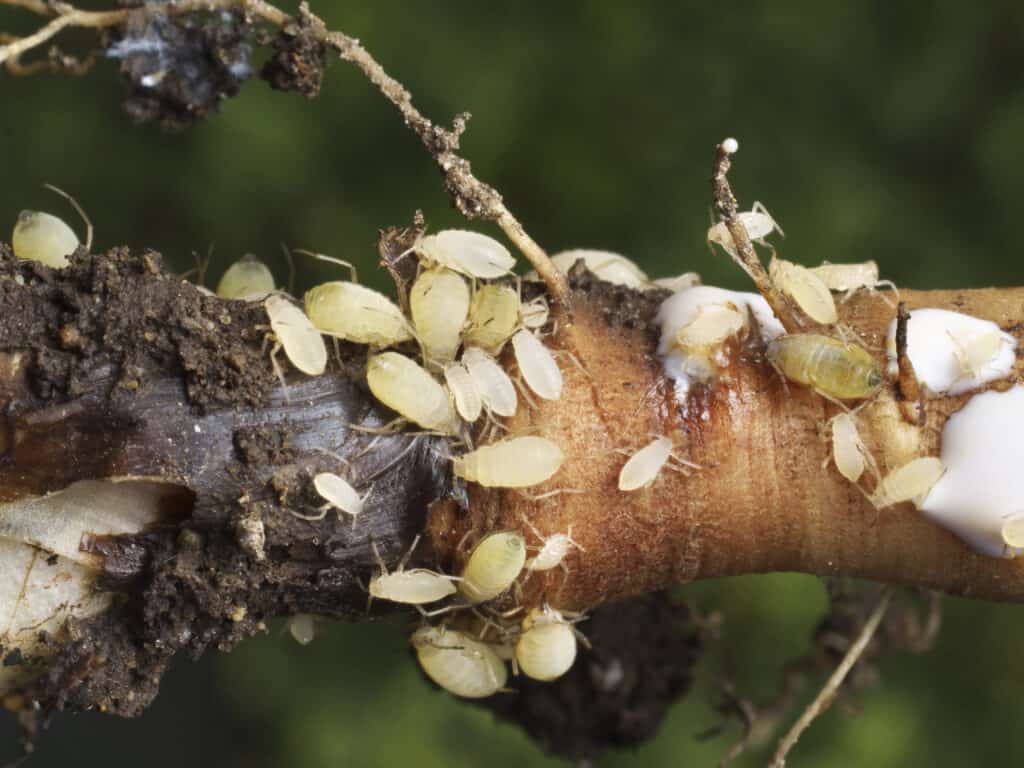
Pests and bugs may still trouble your juniper tree given the fact that it is grown outdoors.
©Floki/Shutterstock.com
While juniper trees are strong and relatively easy to care for, you may still run into some problems with them. A common problem with most juniper Bonsai trees purchased from hardware stores is that they have already been too heavily wired or formed. This may make it difficult to prune, shape, and care for your bonsai tree. This is especially true if you notice that the branches of your juniper tree are weaker than average.
For the most part, if your juniper tree is kept in a sunny location, you are unlikely to have too many other issues. However, pests and bugs may still trouble your juniper tree given the fact that it is grown outdoors. Some of the most common pests to keep an eye on include:
- Aphids
- Scale
- Spider mites
- Rust fungus
- Needle miners
- Webworms
- Other fungal diseases
Whether you consider yourself an expert or a beginning cultivator of Bonsai trees, juniper trees are perfect for any level of bonsai tree artist. With their resistance to temperatures and diseases, juniper trees are highly forgiving and easy to care for – at least in the grand scheme of Bonsai tree care!
The photo featured at the top of this post is © RealityImages/Shutterstock.com
Thank you for reading! Have some feedback for us? Contact the AZ Animals editorial team.






